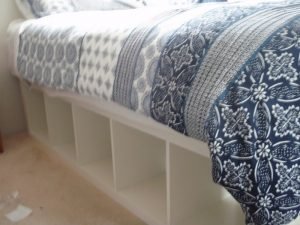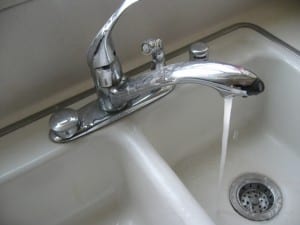Last Updated on October 6, 2025 by teamobn
Your workspace works better when every item has a job and every task has a lane. This guide turns cluttered desks into clean, repeatable systems that scale with busy weeks. The plan centers on home office organization, weaving decluttering, cable routing, smart storage, and quick maintenance into a routine you can keep.
Contents
Home Office Organization Goals and Benefits
A clear plan improves speed and focus. Defined zones and labeled storage reduce setup time and cut distractions during deep work. You move between tasks cleanly because home office organization assigns every item a reliable home.
Standardized systems lower stress and decision fatigue. Consistent cable routes, a single inbox, and predictable file names turn chaos into routine. Your attention stays on meaningful work instead of hunting chargers, adapters, and documents.
Durable routines keep the space adaptable as projects change. Weekly resets and right-sized containers preserve order when new gear arrives or teammates share the office. Your workspace scales without mess, protects privacy, and stays comfortable for long days.

Using the NEAT Method for Your Home Office Plans
The NEAT Method gives readers a repeatable system for labels, containers, and routines. Apply it to home office organization to reduce clutter, speed tasks, and keep work zones stable during weeks.
NEAT Method Products
NEAT Method Products deliver matched bins, drawer dividers, labels, and file boxes that turn scattered supplies into clear zones. The coordinated dimensions prevent awkward gaps and wasted depth. Readers can standardize paper, peripherals, and cables without guesswork. Labels clarify where items live and return after use. The biggest win for home office organization is speed. You reset the desk in minutes and keep surfaces open for focused work.
Professional Home Organizer
A NEAT professional maps zones, pathways, and storage based on how you actually work. The organizer audits inventory, right-sizes containers, and creates naming rules that stick. Cables get routed along anchors, docks consolidate power, and paper capture moves to a single inbox. The practical advantage is measurable time saved. You stop hunting tools, you move cleanly between tasks, and you maintain order even when deadlines pile up.
The NEAT Method Organizing Recipe Book
The NEAT Method Organizing Recipe Book translates professional tactics into step-by-step routines you can repeat. Checklists guide edits, storage assignments, label updates, and weekly resets. Photos and examples remove ambiguity when sizing bins and arranging drawers.
The specific advantage is sustainability. You keep improvements intact after the first weekend. The book reinforces home office organization during busy seasons, so the system holds when new projects and devices arrive.
Desktop Layout That Stays Clear
Clear desks speed decisions and protect focus. This section shows how to stage monitors, docks, and tools so surfaces stay open. The plan backs home office organization and task switching.
Monitor, Arm, And Keyboard Placement
A clean layout starts with eye-height viewing and open elbow room. A monitor arm lifts the screen, frees desk depth, and centers vision over the keyboard. You keep the keyboard and pointing device aligned to shoulder width, which reduces twisting.
The arm tucks the screen back during paperwork. This layout supports home office organization because the center zone remains clear for writing, sketching, or device staging.
Docking And Hubs For Simplicity
A single dock ends cable chaos by consolidating power, displays, and peripherals. You mount the dock under the desk or on a rear rail to keep cords short and anchored. A short tether connects the laptop fast, so setup takes seconds. You avoid daisy chains that eat space. This approach protects surface area for work and gives you straightforward troubleshooting when something fails.
Utility Rail, Tray, And Tool Parking
A slim rail or shallow tray holds daily tools without spreading clutter. You park pens, drives, notes, and a microfiber cloth inside defined lanes. A magnetic strip or peg-backed cup keeps small items visible, yet contained.
You return tools to the same positions after each task. This habit reinforces home office organization and preserves uninterrupted space for notebooks, tablets, and reference printouts.

Five-Minute End-Of-Day Reset
This five-minute routine closes open loops, clears surfaces, and primes tomorrow’s first task. Consistent execution lowers stress, sustains momentum, and strengthens home office organization without late-night cleanup or weekend catch-ups.
- Gather all out-of-place items into a single staging spot, then handle each item once to prevent backtracking.
- Move trash to the bin immediately, file papers into the inbox, and capture the next action on a dated note.
- Return devices to chargers and protective cases so batteries recover overnight and gear starts ready.
- Park cables in labeled anchors near the dock to prevent tangles and preserve a clean horizon line.
- Stage tomorrow’s opener at the center of the desk, and stack supporting materials in a slim, clearly labeled pile.
- Add a single line to your digital task list that begins with a verb and a clear project tag.
- Define the capture inbox as the only landing place for unsorted items so every other surface remains clear.
- Return keyboard, mouse, stylus, and notebook to a dedicated tray that keeps edges aligned and prevents drift.
- Close the laptop, put external displays to sleep, and push in the chair to visually signal completion.
- Wipe the desktop with a microfiber cloth to remove dust, smudges, and visual noise.
- Power down your printer, shredder, and scanner to save on electricity and reduce overnight wear.
- Check battery levels on wireless gear so headsets, keyboards, and pens start the morning fully charged.
- Take ten steady breaths while scanning the room to confirm order and reinforce the habit.
Storage Systems That Actually Fit
Right-sized storage starts with dimensions matching what you own. This section shows how to size drawers, shelves, and bins for quick retrieval. Guidance supports home office organization and durable order.
Match Depth And Height To Contents
Fitting storage starts with a measurement card. You list binder heights, box widths, and the depth your desk can spare. Shelves that match binders prevent wasted air. Bins that match cables keep loops contained. You measure drawer interior height to ensure dividers clear without wobble. Properly matched components support home office organization by letting you retrieve items without pawing through piles or shifting stacks that never sit flat.
Divide Drawers For Small Gear
Small tools misbehave inside big drawers. You stop that drift with modular dividers that create lanes for pens, adapters, batteries, sticky notes, and drives. Shallow trays hold tiny items at a single layer, so nothing hides. You align dividers to the drawer’s full depth to prevent sliding. Labels on tray fronts reinforce placement. This structure reduces rummaging, speeds cleanup, and protects fragile gear from knocks when drawers close.

Labeling That Speeds Every Search
Clear labels act like signposts for your future self. You pick short names that mirror how you think, such as Cables, USB-C or Pens, Fineliners. A consistent font and placement tighten the look. You face labels outward on bins and downward on drawer lips for quick scanning. Matching label color to category improves recognition. This predictable language anchors home office organization and shortens every hunt by turning guesses into direct grabs.
Ergonomics That Prevents Pileups
Good ergonomics reduces movement that creates clutter. This section aligns heights, reach, and lighting so tools remain close and surfaces clear. The approach supports home office organization and protects comfort.
Chair, Desk, And Screen Heights
Comfortable heights stop the shuffle that scatters supplies. You set chair height so feet rest flat and hips open slightly. Desk height meets relaxed forearms without wrists bending. The screen top sits near eye level, which prevents neck strain and keeps your posture tall.
You hold the keyboard close, with your shoulders down. This alignment keeps the center zone steady because you are not compensating with stacks, pads, or awkward workarounds.
Reach Zones And Station Placement
A tidy desk respects reach biology. You keep daily tools inside the easy arc from elbow to hand. Weekly gear lives just beyond that arc. Rare items move to shelves.
You place a capture pad and inbox on the non-mousing side to avoid cross-body reaches. The printer station sits out of the primary zone yet on a direct path. This zoning reduces accidental scatter and speeds resets during busy days.
Lighting That Reduces Glare And Strain
Balanced light fights clutter by preventing squinting and shuffling. You add ambient light for the room, a task lamp for the desk, and a soft accent for the background. You position the monitor perpendicular to windows to avoid reflections.
Diffusers tame hotspots on glossy surfaces. Warmer light supports late evenings. Cooler light lifts morning focus. This layered approach keeps documents readable, reduces headaches, and protects the calm look of your workspace.
Conclusion
Home office organization begins with a clear desk layout that keeps daily tools within reach and reserves the center zone for your primary task. Standardized storage, matched bins, drawer dividers, and precise labels, shortens every search and prevents paper or cable pileups. A five-minute end-of-day reset closes open loops, parks devices and cords, and stages tomorrow’s opener so your workspace starts calm and productive.






